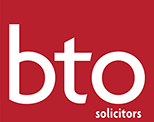Partnership
We are skilled at advising on all aspects of partnership, from the creation and negotiation of the partnership agreement, to advising in the event of dispute and mediation. In a relationship of this nature, the agreement among the parties must be comprehensive and clear. We can assist you whether you intend to have only one partner or many, from family businesses to professional practices, including medical and dental.
- Checklist for setting up a partnership
- Creating a successful partnership Limited
- Liability Partnership Checklist for setting up a partnership
Thinking of starting a partnership? Below is a checklist of steps for you to consider. Keep in mind that your partnership's start up requirements might vary from the list below, depending on the specific type of business you are in and where your business is located.
- Agree the purpose of the partnership
- Agree the roles and responsibilities of each partner
- Establish a structure that ensures open and active decision making by the partners.
- Determine the resources each partner has available for the partnership.
- Enter into a partnership agreement.
- Display all the partners’ names at the business premises together with the address to which correspondence must be sent.
- Display all the partners’ names on all business stationery. If the partnership has more than 20 members you need display only the place of business.
- Each partner must register with HMRC as self employed.
- Contact HMRC to register for VAT if applicable.
Creating a successful partnership
The following criteria for a successful partnership are identified:
- Trust between partners Clear, shared objectives
- A realistic plan and timetable
- A commitment from partners
- Clear framework of responsibility and accountability
- Realistic ways of measuring achievements.
Limited Liability Partnership
What is it?
A Limited Liability Partnership (LLP) is a legal entity and a body corporate, introduced by the Limited Liability Partnership Act 2000. It is an alternative corporate vehicle that gives the benefits of limited liability but allows its members the flexibility of organising their internal structure as a traditional partnership. It has a separate legal personality from its members, which means effectively that it is empowered to enter into contracts, borrow money, own property, enter into leases, sue and be sued.
The Issue of Liability
An LLP offers limited liability to its members. Third parties would usually contract with the LLP rather than with the members themselves, therefore, in those circumstances it is the LLP that would be liable. Nonetheless, it is possible to bring a claim for economic loss against an individual member who has been negligent. Any such claim would be a civil action outside the contract as the party would have contracted with the LLP.
It should be noted, however, that there is another circumstance where a member can be held liable and not the LLP. The Requirements of Writing (Scotland) Act 1995 stipulate that a document shall be deemed to have been signed by an LLP, if it is signed by a member on its behalf. The execution of a document should be clearly designed in this manner, for example ‘AB on behalf of CD LLP’. It is vitally important that all documents intending to bind the LLP are executed in this way. Unfortunately, there have been instances where a member has signed in his/her own name, omitted the reference to the LLP, and become personally liable to perform obligations under a contract.
Advantages
- It is taxed as a partnership.
- It may help to recruit people with partnership potential, who may have otherwise have been discouraged from entering into a partnership due to the liability issue.
- It does not have to be dissolved on the death, resignation or bankruptcy of a member.
- It has the organisational flexibility of a partnership.
- Unrestricted membership.
- Members can be individuals, limited companies or trustees, resident in the UK or abroad and are not restricted to 20 in number (as are many general partnerships).
Disadvantages
- Formalities and costs involved in setting up.
- More onerous filing requirements with strict time limits.
- Having information on public record.
- Must prepare and file audited statutory accounts – with additional costs and disclosures.
- Lenders may want personal guarantees to support lending.
Of course, the limited liability that is bestowed upon members is one of the main attractions of an LLP. However, as indicated previously, it is by no means absolute.
Contact: Scott Wyper, Partner swy@bto.co.uk / Jeremy Glen, Partner jsg@bto.co.uk / Alastair Dunn, Partner akd@bto.co.uk / Emma Barclay, Partner eba@bto.co.uk / T. 0141 221 8012


